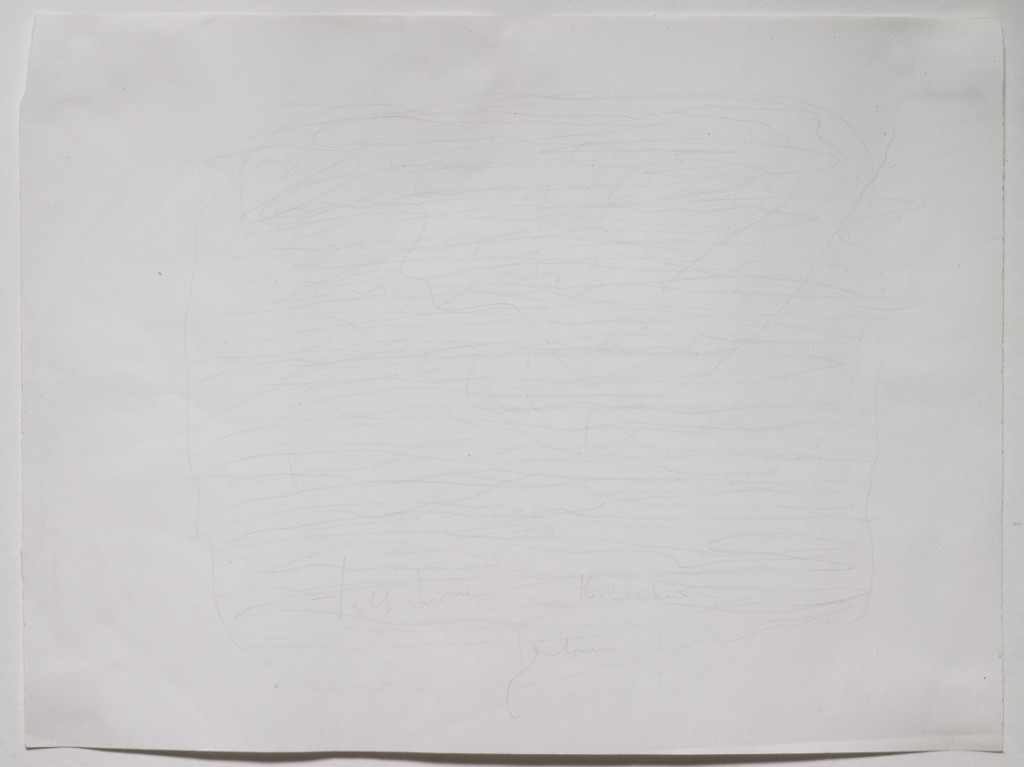Primarily horizontal penciling, the multiple lines are framed in a rectangular form, which is suggestive of white-noise on television. Written at the left bottom is “talk show”, and the others are illegible. White noise refers to static, i.e. dots and waves in disorder on the TV screen when there are no broadcasts, when you tune in to channels that TV stations do not use, or when there are signal interferences or input errors. It is often called ‘snow.’ Drawing on cybernetics, particularly Norbert Wiener’s words that “the more probable the message, the less information it gives. Cliches, for example, are less illuminating than the great poems” Paik argued that “white noise has the maximum quantity of information.” Paik also portrayed Mary Bauermeister’s oil paintings from the 1950s, as snowflakes in different colors, as a kind of white-noise environment in which no message is coded.





